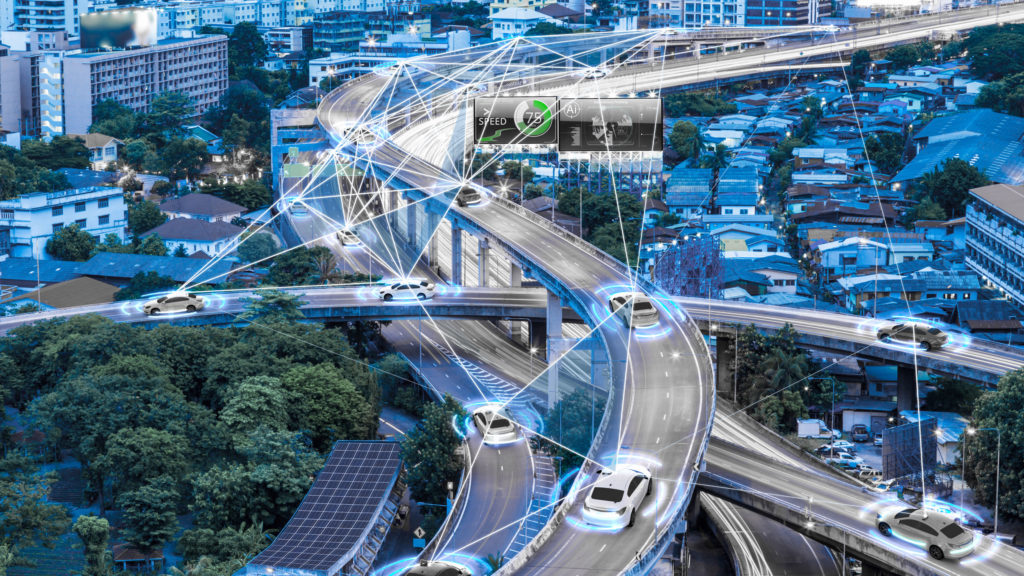Detective Chief Superintendent, Andy Cox, led a seminar at MOVE 2021 entitled ‘Serious collision investigation: preventing future road deaths.’ It was topical and sparked intrigue for its relevance to national debate surrounding road safety.
In the seminar, Cox urged the media and citizens to stop using the term ‘accidents’ when referring to traffic collisions. He suggested that an accident implies the collision was always likely to happen and couldn’t be prevented.
Cox invited his audience to question society’s perception of road death. He believed that fatalities are often accepted as inevitable. He argues, however, that authorities can use data and smart technology to create a higher impact in policing and prevention.
Road data and reality
Cox said that drivers who are uninsured are more likely to be criminally active in other ways. Using this logic, information was extracted from data to narrow the millions of drivers in London down to 500 that were deemed ‘high priority.’
London also has tens of thousands of roads. To aimlessly patrol them all isn’t overly effective. Thus, roads were narrows down to 136 that accounted for a third of paper collisions.
Through the extrapolation of data, Cox said that police targeted criminals more effectively. The roads that they patrolled and people they pulled over resulted in finding things such as weapons, drugs, counterfeit currency and stolen vehicles.
Technology aiding justice
People are less likely to speed or commit road crime if they can see police or a speed camera. Citizens have now been empowered by technology to aid policing. Through the encouraged use of dashcams and electronic footage, witnesses can submit evidence to help prosecute dangerous drivers. Cox described this as a “game changer” for road danger.
As well as calling upon the public to use their cars’ features, authorities have urged manufacturers to standardise the fitting of dashcams and such. They’ve also worked with insurers to incentivise the use of them with lower rates, which Cox believes holistically makes for safer roads.
Instead of prioritising marketing features like ‘nought to 60 in a few seconds,’ Cox also calls on advertisers to sing about the safety and capability of a car.
Despite Cox praising the use of technology to promote safety, many people have contested the use of ‘smart’ features on the road. One such controversy is the recent transition to smart motorways across England.
What are smart motorways?
The RAC (Royal Automobile Club) defines a smart motorway as:
A section of a motorway that uses traffic management methods to increase capacity and reduce congestion in particularly busy areas. These methods include using the hard shoulder as a running lane and using variable speed limits to control the flow of traffic.
There are currently three types of smart motorway:
- ‘All lane running’ – This has no hard shoulder. The first lane, which would ordinally be a hard shoulder, can be closed in the event of an incident. Closure is indicated by a red ‘X’ on the overhead gantry and/or verge-mounted signs. In lieu of a hard shoulder, drivers are encouraged to use ‘emergency refuge areas’ (ERAs) which are typically spaced one and a half miles apart from each other.
- ‘Dynamic hard shoulder’ – Here, a solid white line differentiates the hard shoulder from a normal carriageway. The hard shoulder as a running lane to traffic during busy periods to ease congestion.
- ‘Controlled motorway’ – These have three or more lanes with variable speed limits as it attempts to retain the traditional hard shoulder.
How safe are they?
The purpose of smart motorways is to better utilise road space, as well as minimise environmental impact. However, a survey conducted by the RAC in 2019 found that seven in 10 respondents felt removing the hard shoulder compromised safety.
Smart motorways consist of a lot more cameras than a conventional one. These cameras use a system called MIDAS which detects slowing traffic. Concerns suggest this is not quick enough though.
SVD (stationary vehicle detection) uses more intelligent radar technology on ‘all lane running’ motorways and can detect stationary vehicles up to 16 minutes quicker than a camera-based system. However, a Highways England report found that only revealed that only 18% of ‘all lane running’ motorways have this installed.
Fatalities have occurred as stationary vehicles are hit by cars from behind. In 2019, 15 people were killed on ‘all lane running’ and ‘dynamic hard shoulder’ motorways. This is clearly incomparable to incidents on conventional motorways which span far more land. Concerns are nonetheless valid as the government announced that no new smart motorways without hard shoulders would be opened without additional safety measures.
A smart road doesn’t necessarily mean a safe road
As most well know, technology is developing at a rapid rate. Its potential to prevent harm and save lives is phenomenal, however many question whether these ‘intelligent’ features are actually posing dangerous threats.
One to look out for could be the introduction of smart traffic lights. They are set to communicate with your car to tell you what speed you need to travel to safely beat the light change, and if stopping is inevitable, it will tell you how long to wait before they go green.
The lights will relay information to a dashboard-mounted display in equipped cars and have a range of two thirds of a mile, which is roughly one kilometre. This is thought to reduce vehicle emissions by a quarter as it eliminates unnecessary stops and revving.
However, consequences may vary. This could include reckless drivers just upping the ante and breaking the speed limit to make the lights. With this technology only being accessible to those that have had it fitted in their cars, it could also create disastrous results for road users with differing perspectives.
Without a doubt, smart technology has the capacity to bring about positive changes. The extent to which we trust it, however, is still yet to be determined.
